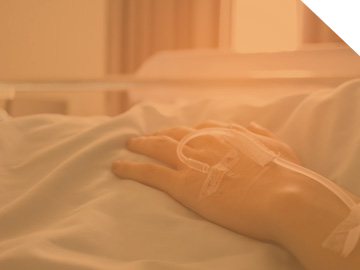The Missing Link:
EpiXact® links Burkholderia cepacia to contaminated ECMO water heaters
Background
In December 2020, three cardiothoracic intensive care unit (CTICU) patients at a large academic hospital were identified with hospital-onset Burkholderia cepacia infections. Although preventative interventions were implemented, two additional B.cepacia patients were identified a month later. All CTICU patients were immediately put on contact precautions and switched to sterile, bottled water for hydration instead of tap water. Unfortunately, within the next month, two more patients were diagnosed with B.cepacia infections.
The High Stakes Decision
All inpatient cultures positive for B.cepacia between October 2019 – February 2021 were reviewed and 13 were identified as originating from the CTICU. Since B.cepacia is known to contaminate hospital water reservoirs and environmental surfaces, specimens were taken from sinks in the CTICU and cultured, but all came back negative. While these investigations were being conducted, three B.cepacia-infected patients died and another three developed chronic, recurrent B.cepacia infections. Infection Control needed to urgently identify the cause of this ongoing transmission.
Solution
Infection Control sent seven B.cepacia complex isolates, grown from CTICU patients, to Day Zero Diagnostics to perform an epiXact HAI investigation. Four of the seven were identified genomically as B.contaminans (a species within the B.cepacia complex) and were found to be clonally related (pairwise SNP distances between 0 and 6). The other three specimens were genomically different species and not related to the outbreak cluster. By narrowing the investigation to the infections epiXact found to be cluster-related, Infection Control found that they had all occurred in patients who received extracorporeal membrane oxygenation (ECMO) support.
Infection Control then collected environmental samples from the 9 ECMO devices in circulation at the hospital. These along with additional patient specimens were sent to Day Zero Diagnostics to determine if these cases were part of a persistent outbreak linked to an ECMO-related reservoir. Ultimately, using whole genome sequencing (WGS), epiXact showed that seven of the 13 patients were infected with the same B.contaminans strain and, most importantly, all of these strains were genomically identical to the ones cultured from the ECMO devices.
Outcome
EpiXact, linked an ongoing B.cepacia outbreak that cost the lives of three patients and endangered many others to the use of ECMO devices. The Infection Control team then cultured all ECMO water heaters, corroborating the epiXact analysis, and identifying them as the proximal source of the outbreak. As a result of the investigation, the hospital removed the ECMO water heaters from clinical service. No further hospital-onset B.cepacia infections have been identified in the CTICU in the twelve months since action was taken.
This case case study is described in “Cluster of Burkholderia cepacia Complex Infections Associated with Extracorporeal Membrane Oxygenation Water Heater Devices,” published in Clinical Infectious Diseases.
Rhee C et al. Cluster of Burkholderia cepacia Complex Infections Associated with Extracorporeal Membrane Oxygenation Water Heater Devices. CID. 2022 March.
Day Zero Diagnostics is a CLIA certified laboratory. EpiXact is available as a CLIA validated service or Research Use Only. EpiXact is available as Research Use Only in CA, MD, PA, RI and NY.
Nosocomial B.cepacia clusters in hospitals have been linked to contaminated
water reservoirs, sinks, environmental surfaces, and care items such as medications, respiratory equipment, and procedural supplies.

Confidence to Make the Hard Decisions
Epixact Confirms a Transmission in a Clinical Trial with Wide Ranging Implications

To Screen or Not to Screen
Using epiXact to Determine if Large Scale Healthcare Worker Screening for MRSA is Merited
